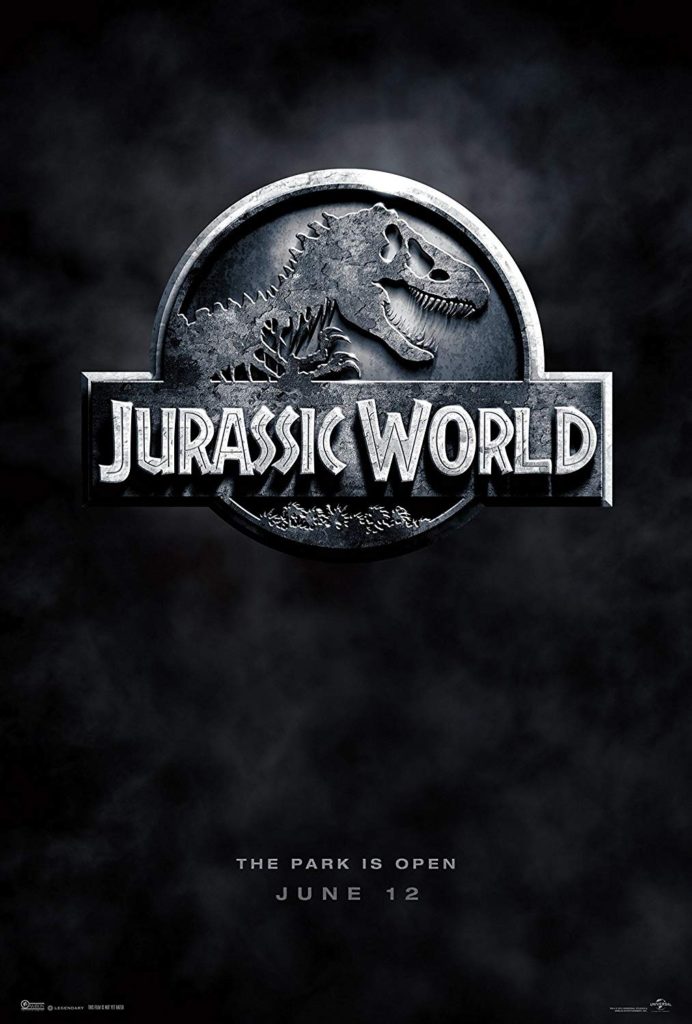
In 2015, Jurassic World debuted. Set 22 years after the original film (the actual amount of time that had passed), the reboot picks up a decade into the successful operation of a new park.
Jurassic Park was an ultra-elite, low-capacity, boutique park designed for the rich and famous; an all-inclusive island resort hidden among the tropical jungles of Costa Rica; a billionaire’s luxury playground; the dinosaur equivalent of SeaWorld’s Discovery Cove, built to cater to the whims of one-percenters. And while the rugged hiking trails and cracked concrete of that failed experiment rot away somewhere on Isla Nublar, a new section of the island has been redeveloped and reborn…
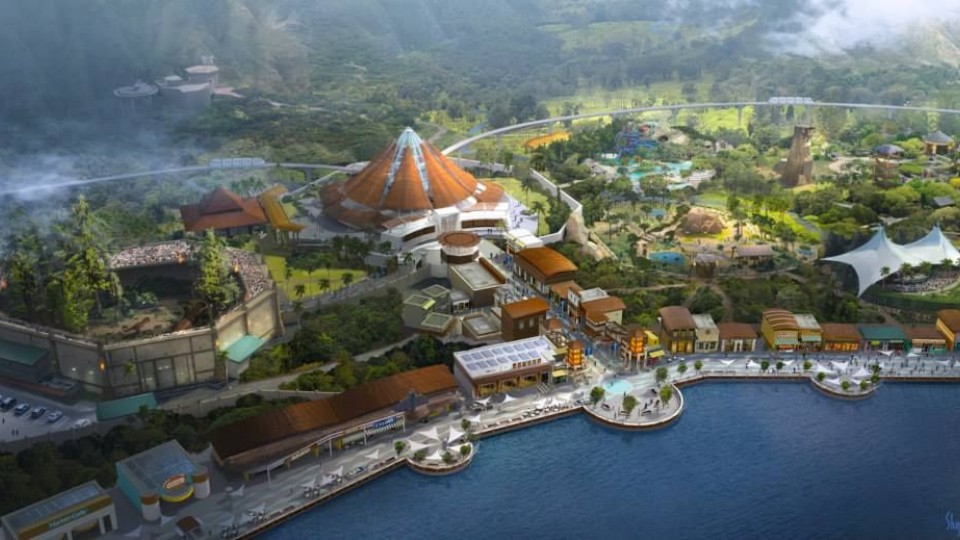
Put simply: this is not your grandfather’s Jurassic Park.
Jurassic World has more in common with Shanghai Disneyland than Discovery Cove; it’s a corporate-built, master-planned, built-out theme park for the masses, from guests’ arrival via monorails and ferries to its CityWalk-style retail-and-dining district stocked with everything from Fossil to Starbucks. It all leads to the park’s Samsung Innovation Center – a clear homage to the original Discovery Center, blown up with modern glass and wood, and a whole island’s worth of high-tech tours and outright thrill rides.
But its main draw? Bio-engineered dinosaurs genetically designed to create our collective shared image of dinosaurs (cleverly addressing the series’s maintaining of scaly reptilian dinosaurs despite now-undeniable evidence that many dinosaurs were covered in feathers). If Jurassic Park was committed to showing dinosaurs in their natural state, Jurassic World commodifies them for our entertainment: Shamu-like stadiums (complete with “splash zones”) built around the aquatic mosasaurus that literally eats sharks for dinner; enormous stages for showcasing velociraptors trained like performing seals… and a new headlining attraction…

Jurassic World is built to give the people what they want. And what they want is the newest, baddest, most deadly predator on Earth. That old, roaring T. rex might’ve left Baby Boomers quaking, but times have changed. To capture the imaginations of Gen Z, Jurassic World scientists have upped the ante with a much more Tik Tok-able predator…
… Enter the wild, viscious, and brilliant Indominus rex. This horrific creature “wasn’t bred; she was designed,” fusing DNA from the dinosaur kingdom’s nastiest meat-eaters with a cuttlefish, tree frog, and pit viper. A genetically-engineered hybrid super predator capable of thermal regulation and color camouflage, with crocodilian teeth, sickle-shaped claws, and record-breaking bite force… what’s the worst that could happen?

With a new cast of characters including the park’s operations manager Claire (played by Bryce Dallas Howard), animal behavior specialist / raptor trainer Owen (Chris Pratt) and his uneasy velociraptor sidekick Blue, Jurassic World upped the ante on its predecessors in action, even if it reads more like summer popcorn flick fare than generation-defining cinema.
But even if film critics and fans largely consider the new series to lack the brains, heart, and awe of the originals, Jurassic World earned $1.67 billion at the box office – more than Harry Potter and the Deathly Hallows Part II.
And frankly, the resulting franchise has been more successful financially and critically than Jurassic Park’s sequels were. 2018’s Jurassic World: Fallen Kingdom nearly reached the same box office milestone as its predecessor, and a highly-anticipated third (and final?) entry in the new trilogy is set for 2022 (pushed back from 2021 due to the COVID-19 pandemic). In the meantime, Netflix’s Dreamworks-produced Camp Cretaceous animated series has shown Universal’s commitment to expanding Jurassic World as one of its leading IPs.
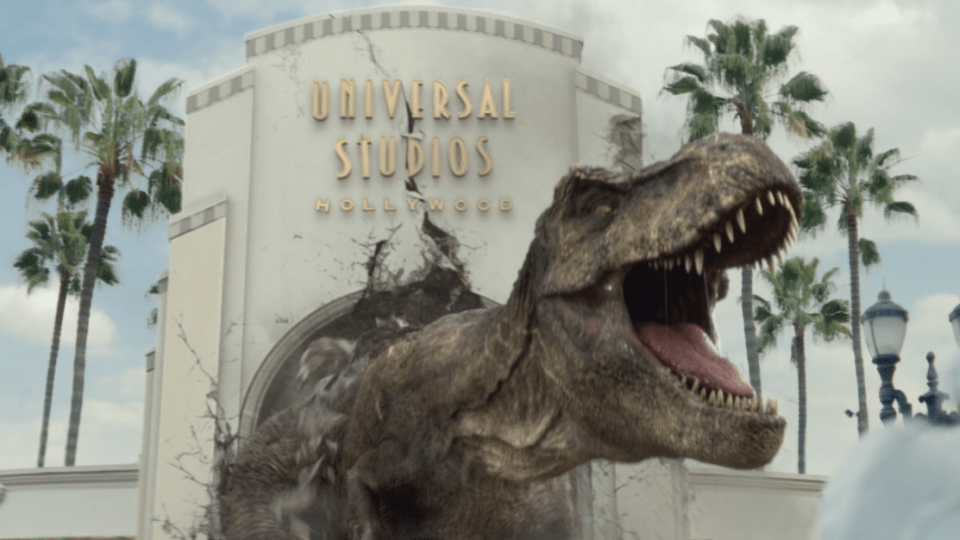
And as we know from Lost Legends: JAWS, Back to the Future: The Ride, T2 3-D, and Kongfrontation, nothing at Universal is forever. When a hot new franchise arises, it demands a place in the park come hell or high water. In most any head-to-head between a classic and a current hit, you can count on the latter winning out at Universal. And that’s just what happened…
On September 3, 2018, Jurassic Park: The Ride closed forever at Universal Studios Hollywood. In a large-scale redesign, the original ride’s yellow, red, and black accents, signage, and rafts were stripped, replaced with the cool, modern blue, white, and silver of the Jurassic World franchise. But would the Indominus rex replace the Tyrannosaurus? Would that iconic score remain? What was happening behind the closed gates? It turns out, quite a lot…
Jurassic World: The Ride
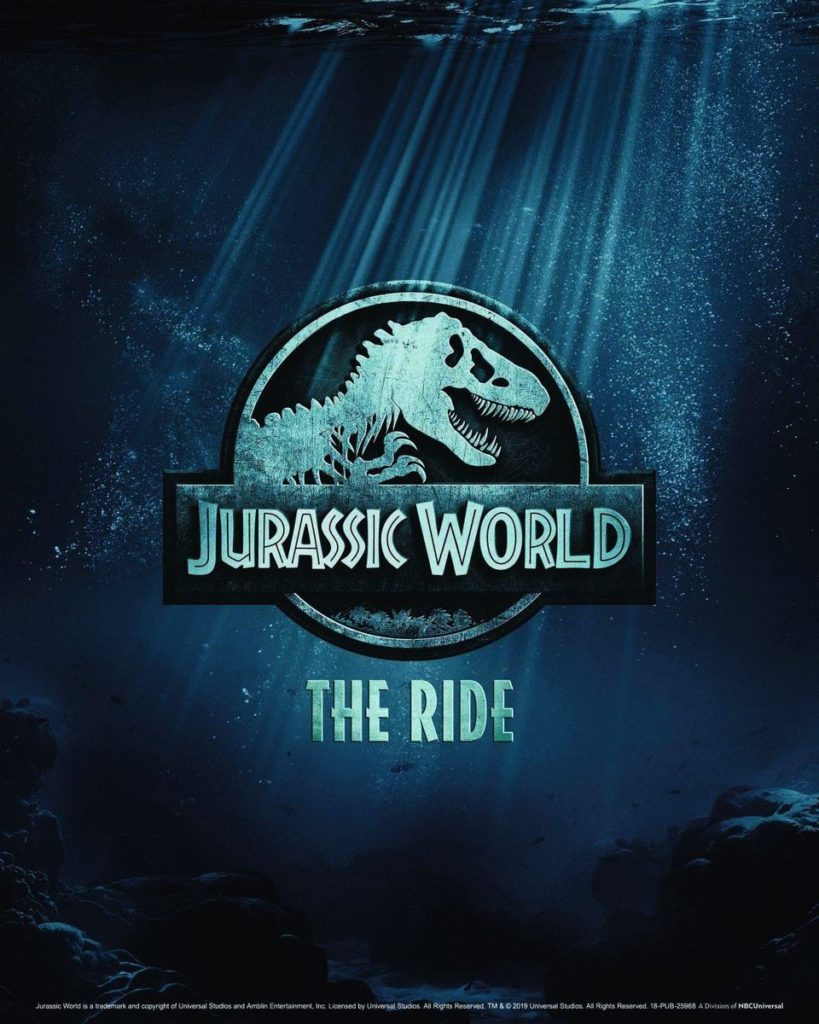
It’s not just that Jurassic World: The Ride absorbed the more modern, sleek, white and blue coloring of the newest film trilogy; the experience on board is entirely unique. A few of the noteworthy changes you’ll spot along the banks of the new Hollywood attraction?
- The opening scene (the John Williams score, trellis, and Jurassic Park wooden gates) have been replaced with new music, narration, and visuals indicating guests arrival at the tank of the mosasaurus;

- The Ultrasaur Lagoon scene has been entirely enclosed, with parallax screens simulating glass walls looking out into the tank of the aquatic mosasaurus. A rare appearance of screens in the ride, the scene is exceedingly well-done and contains a surprise or two.
- Guests are no longer “thown off course” by the playful hadrosaur; instead, the rafts are seemingly meant to drift into the higher-security Predator Cove exhibition space… albeit, alarms signal that the creature fences inside have failed, which is still a pretty big “something goes horribly wrong” plot twist…
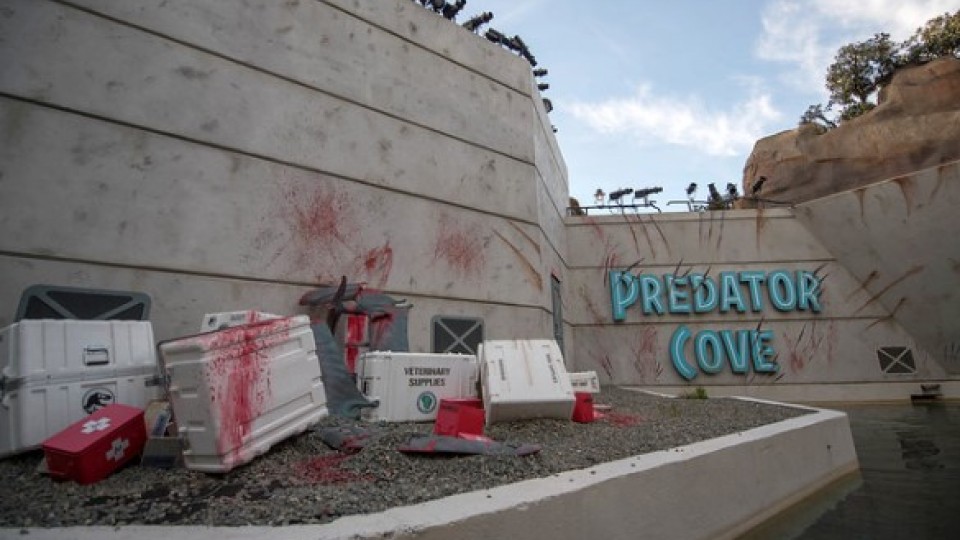
- The falling Jeep has been removed and replaced with the mangled bars of the Indominus rex’s enclosure, with bloodied claw marks and dead pterodactyls across the river indicating its escape… Initially somewhat static and lifeless, this scene was “plussed” in 2021 by the return of compsognathus in a tug-of-war over popcorn and a fallen Gyrosphere vehicle;
- Monitors placed along the course connect “live” to Bryce Dallas Howard’s “Claire” and Chris Pratt’s “Owen” as they direct riders on what to do;
- An animatronic of the Indominus rex’ head peeks at guests through a hole ripped into T. rex exhibit signage – no doubt foreshadowing of a battle to come;
- The interior of the Environmental Systems Building has lost its “industrial” appearance and instead was redesigned as the “T. rex Kingdom” exhibit, with false rockwork and plants giving the impression of a curated habitat guests are meant to visit;
- The initial attacking T. rex animatronic (the gnashing head) has become the I. rex;
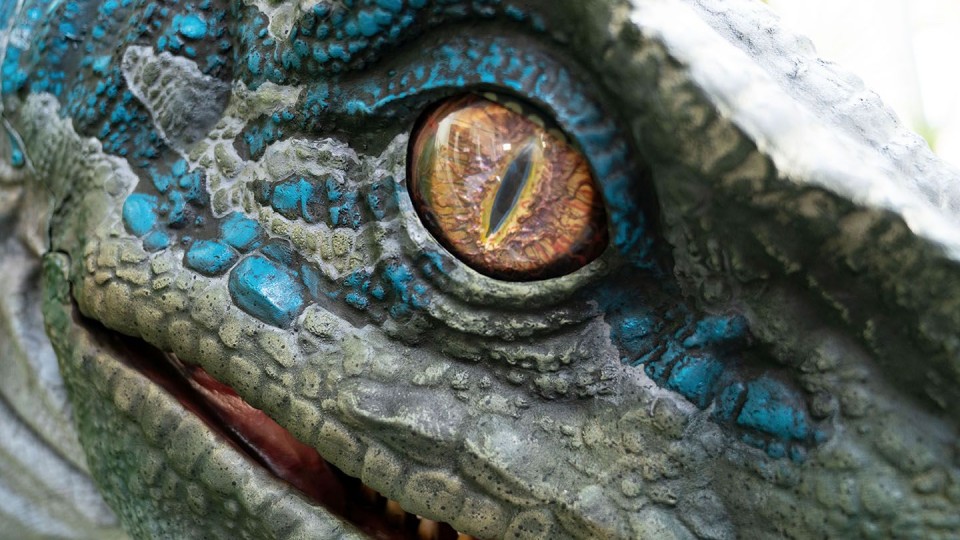
- Blue, the famous Velociraptor from Jurassic World, makes an appearance in animatronic form before the finale;
- Though the T. rex remains the dinosaur over the drop, it was formally joined in 2021 by an unspeakably awesome Indominus rex animatronic that we rank among the most incredible animatronics on Earth.
Take a ride through the magnificent Jurassic World: The Ride here. It’s not a matter of figuring out what’s changed from Jurassic Park; it’s more about trying to find something that’s stayed the same!
Is Jurassic World: The Ride better than its predecessor? We’ll leave that up to you to decide. We can confidently say that the newest iteration of Universal’s prehistoric water ride certainly features its fair share of “wow” moments and much-improved pacing in spots, but it seemingly splits the difference by undermining some of the greatest moments of the original in stretches of inactivity or passive scenery. (In our opinion, the best Jurassic river ride would be a fusion of the two.)
Now, Universal had not just a hot IP making billions at the box office, but a successful conversion of their Hollywood attraction to the much more modern brand. Which brings us to the question everyone’s wondering…


